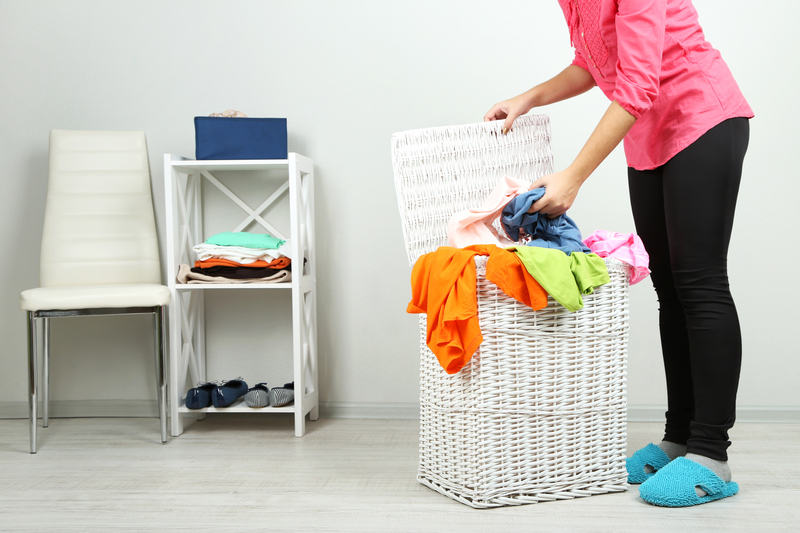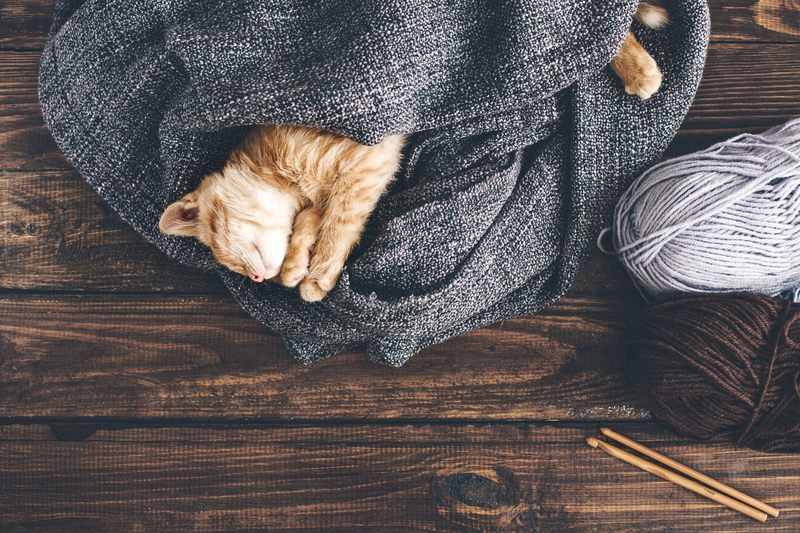Step-by-step Guide to Clean Stubborn Stovetop Residue
Posted on 22/05/2025
Step-by-Step Guide to Clean Stubborn Stovetop Residue
Maintaining a spotless kitchen is essential for both hygiene and aesthetic purposes. One of the biggest challenges faced by home cooks and professionals alike is eliminating stubborn stovetop residue. Greasy patches, burnt-on spills, and tough stains not only make your stovetop unattractive but can also harbor bacteria. In this comprehensive and step-by-step guide, you'll learn the best techniques and tricks for cleaning even the most resistant grime from your stovetop, leaving it shining like new.

Understanding Stovetop Residue and Why It's Tough to Remove
Kitchen stovetops, whether gas, electric, or induction, bear the brunt of daily cooking, often resulting in sticky messes and caked-on food. Stubborn stovetop residue usually includes:
- Grease splatters from oils and butter.
- Baked-on sauces and sugary liquids.
- Burnt food particles from spillovers and overflows.
Over time, this residue can harden, making it even harder to clean. Regular cleaning helps, but sometimes only a meticulous approach will restore your stovetop to its original sparkle. Let's dive into an effective, step-by-step process!
Before You Begin: Gather Your Supplies
Having the right cleaning materials on hand makes the process much more efficient. For the best results when removing stubborn stovetop residue, assemble the following items:
- Baking soda
- White vinegar
- Lemon juice (optional, for freshness and extra power)
- Dish soap
- Non-abrasive scrubbing pads or soft sponges
- Microfiber cloth
- Old toothbrush (for hard-to-reach spots)
- Plastic or silicone scraper (never metal on glass or ceramic!)
- Gloves (to protect your hands)
- Warm water
*Tip: Make sure your stovetop is completely cool before you begin cleaning.
Step 1: Remove Grates and Burner Covers
The first step in deep cleaning a stovetop is to clear the space. Remove any grates, burner covers, and knobs if possible. Set them aside for separate cleaning.
- For electric stoves: Remove the coil burners according to your user manual.
- For gas stoves: Carefully lift off the grates and any removable burner heads.
- Soak these parts in a sink filled with warm, soapy water while you focus on the stovetop surface.
Step 2: Loose Debris and Initial Wipe Down
Use a dry sponge or paper towel to wipe away any loose crumbs, debris, or food chunks from the stovetop. This makes the residue cleaning process more manageable, and you won't be spreading crumbs around as you scrub.
- Tip: For glass-top stoves, use a microfiber cloth to prevent scratching.
Spot Clean Fresh Stains
If you notice freshly spilled oil or sauce, sprinkle a little baking soda and gently dab with a damp sponge--this can prevent stubborn stovetop residue from forming.
Step 3: Apply a Cleaning Solution
For hardened, stuck-on residue, simple dish soap won't cut it. You'll need a potent yet safe cleaning solution. There are a few combinations that work wonders:
-
Baking Soda and Vinegar Paste:
Mix a few tablespoons of baking soda with a small amount of water to form a thick paste. Spread this onto the affected areas.
- Let the paste sit for 10-20 minutes to break down the residue.
- Spray or drizzle white vinegar over the baking soda. It will fizz and help lift the grime.
-
Lemon Juice and Baking Soda:
Squeeze fresh lemon juice over the spots, then sprinkle baking soda. The citric acid works as a natural degreaser and also leaves behind a pleasant scent.
-
Commercial Stovetop Cleaners:
Products specifically designed to clean tough stovetop residue can also be used, but ensure they are safe for your appliance's material.
Allow Time to Work
Give your chosen cleaning solution at least 10-20 minutes of dwell time. This patience pays off when you start scrubbing later!
Step 4: Scrub Safely and Effectively
This is the crucial step for removing stubborn stovetop buildup. Be gentle, but persistent:
- Use a non-abrasive scrubbing pad or soft sponge to avoid scratching enamel, glass, or ceramic surfaces.
- For tight crevices, use an old toothbrush dipped in your cleaning paste.
- Work in circular motions to lift the grime, focusing on problem areas with the toughest residue.
- If needed, reapply the cleaning solution and let sit for a few more minutes.
- Use a plastic or silicone scraper to gently lift away stuck particles--never use a knife or metal scraper on glass or ceramic stovetops!
_Persistent stains?_ Don't be tempted to use steel wool or heavy-duty abrasive pads. They will scratch and damage the surface, making it harder to clean in the future.
Step 5: Wipe Down and Rinse
After you've scrubbed away the toughest grease and grime, it's time to remove any remaining cleaning solution and dissolved residue.
- Wipe with a damp microfiber cloth to remove the loosened grime and cleaning paste.
- Rinse the cloth frequently in warm water and repeat as needed.
- Follow up with a dry towel to buff the surface and remove streaks.
Be meticulous: cleaning residue left behind can attract more dirt and make your stovetop sticky again.
Step 6: Clean Grates, Burners, and Knobs
While your stovetop dries, turn your attention to the grates and burners that have been soaking.
- Scrub these parts with a sponge or brush. Baking soda paste can help for very greasy grates and burner caps.
- For extremely stubborn buildup, let the parts soak longer or use a degreasing cleaner.
- Rinse and dry them thoroughly before reassembling onto the stovetop.
- Knobs can be wiped with a damp cloth, but never soak electrical components.
Step 7: Polish for a Sparkling Finish
To achieve a like-new shine and finish the deep cleaning of your stovetop:
- Wipe the entire surface with a dry, clean microfiber cloth.
- For glass or ceramic stovetops, use a specialty polish or a couple of drops of vinegar on your cloth for an extra gleam.
- Replace all grates, burners, and knobs.
- Enjoy your rejuvenated, residue-free stovetop!
Extra Tips to Prevent Stubborn Stovetop Residue
- Clean up spills immediately. Fresh spills are much easier to wipe up and won't bake onto the surface.
- Use burner liners. These catch spills before they become a problem. Make sure they're compatible with your stovetop model.
- Regular maintenance. Give your stovetop a quick wipe after every cooking session to avoid tough, stubborn residue buildup.
- Monitor heat settings. Prevent boil-overs and scorched food by keeping an eye on your cooking and adjusting temperatures as needed.
Special Considerations for Different Types of Stovetops
Gas Stovetops
- Burner heads can clog with residue. Clean the small holes with a toothpick (while the stove is off and parts are cool).
- Avoid getting water in ignition mechanisms.
Electric Coil Stovetops
- Never immerse coils in water. Gently clean with a damp cloth as needed.
- Drip pans beneath can be removed and soaked, then scrubbed with a soapy sponge or baking soda paste.
Glass or Ceramic Cooktops
- Require the most gentle cleaning. Always use non-scratch sponges, and avoid abrasive pads or powders.
- Use specialty cleaners where possible to maintain the pristine look and protect the surface.
Common Mistakes to Avoid When Removing Stovetop Residue
- Using harsh abrasives. These can permanently damage your stovetop surface and make future stains even harder to clean.
- Not letting cleaning solutions sit. It's tempting to rush, but allowing time breaks down stubborn residue more effectively.
- Overusing water. Pooling water can seep into electrical parts and create hazards. Wipe dry thoroughly.
- Neglecting to clean removable parts. Dirty burners and grates can re-soil your stove even after deep cleaning.
Eco-Friendly Solutions for Stovetop Cleaning
If you prefer environmentally friendly products, natural solutions like baking soda, vinegar, and lemon juice can tackle most stubborn stovetop grime. They are safe, non-toxic, and won't harm your surfaces or indoor air quality.
- Use reusable cloths instead of paper towels for a greener clean.
- Avoid excess packaging by buying supplies in bulk or refillable containers.

When to Call a Professional
Occasionally, stubborn stovetop residue may resist even your best efforts--especially after years of neglect or for commercial-grade messes. If your stovetop is still dirty after several cleaning attempts, or if you encounter electrical issues or strong odors, it may be time to call in professional appliance cleaners. They have the experience and tools needed to restore your stove without damaging it.
Conclusion: Enjoy Your Pristine, Residue-Free Stovetop
Dealing with stubborn stovetop residue doesn't have to be frustrating or time-consuming. With the right approach, supplies, and a little patience, you can easily remove even the most persistent grime and restore the shine to your kitchen's centerpiece. Remember, regular cleaning keeps future residue at bay and ensures a safer, more pleasant cooking environment. Try this step-by-step guide the next time you face a tough mess, and savor the satisfaction of a truly clean stovetop!
Looking for more kitchen cleaning tips? Explore our other resources for maintaining a spotless, healthy home.




